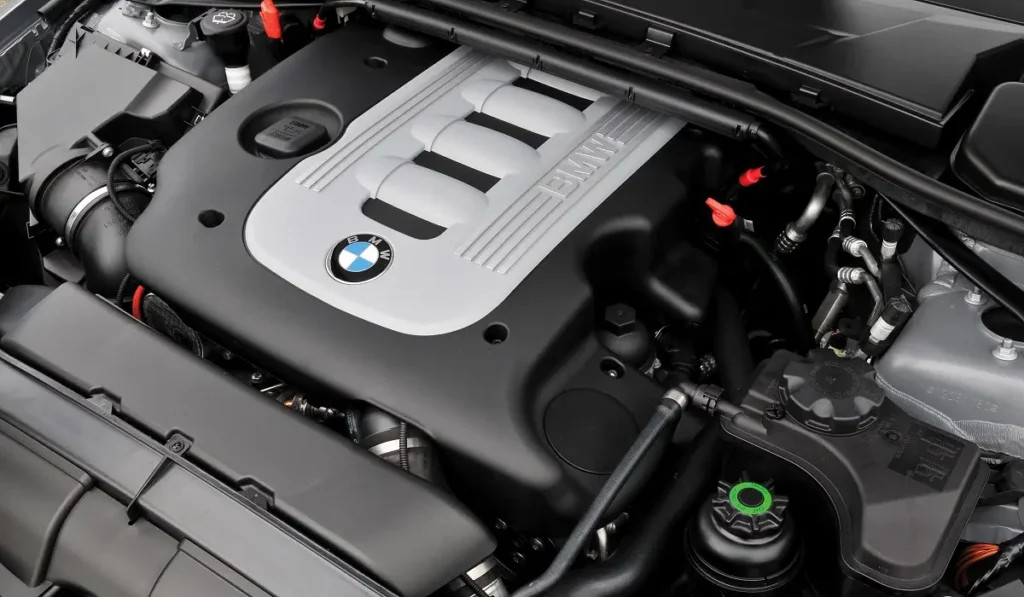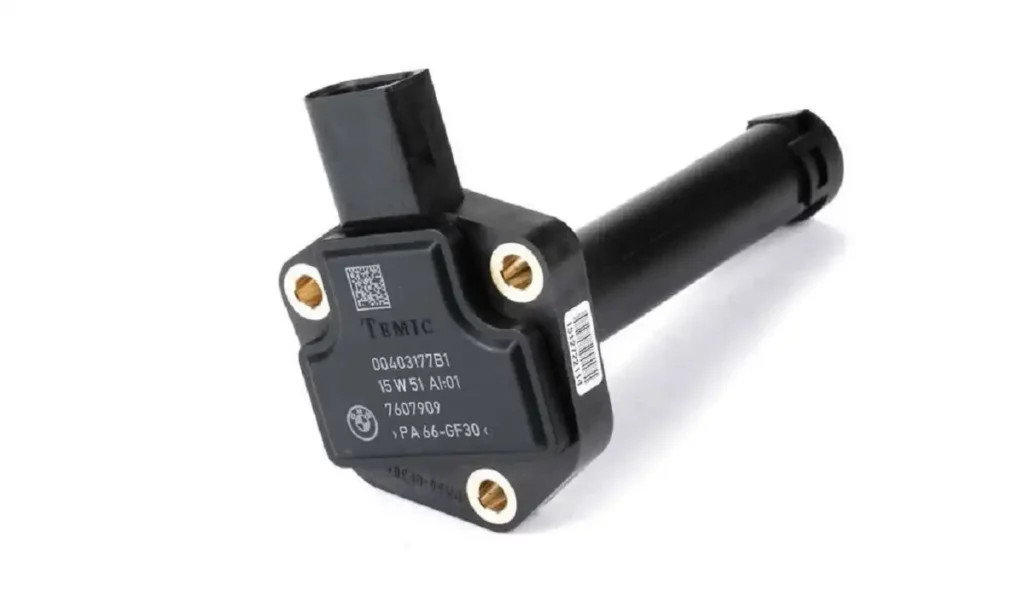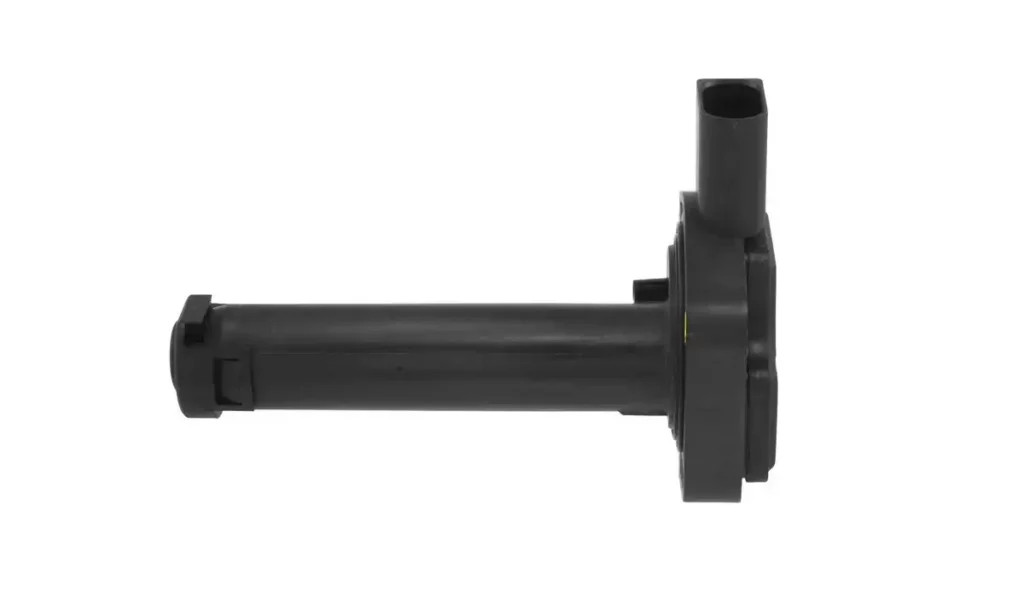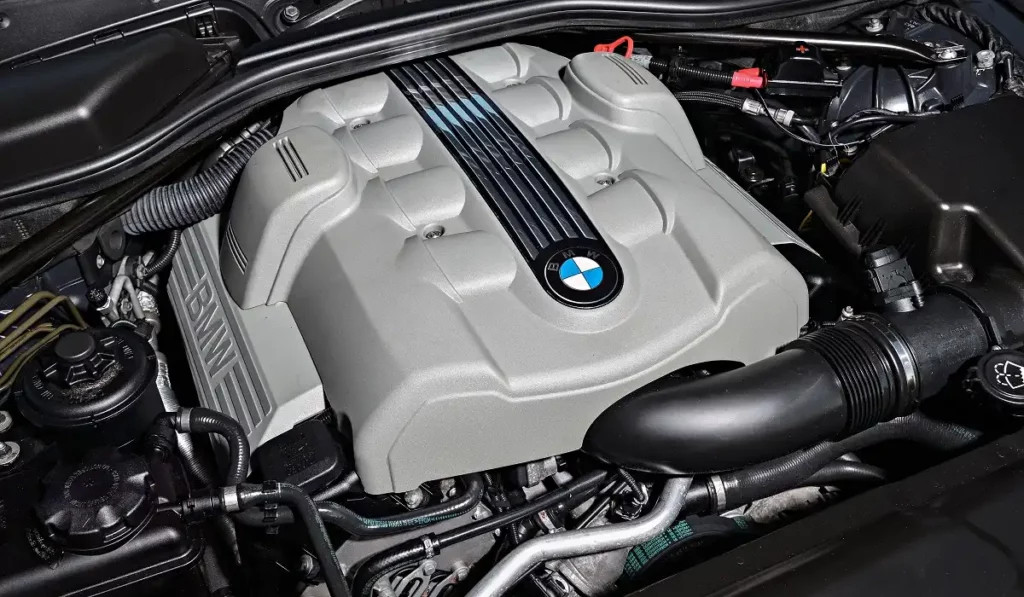

What Does 2E9F BMW Code Mean And How To Fix?
Table of Content
- 1. Brief Overview of BMW Diagnostic Codes
- 2. Introduction to the 2E9F BMW Code — Oil Condition Sensor Issues
- 2.1. What is the Role of Oil Condition Sensors (OZS) in BMW Models?
- 3. Understanding the 2E9F BMW Code
- 3.1. How Does the 2E9F BMW Code Impact Engine Performance?
- 4. Causes of the 2E9F BMW Code
- 4.1. Can Sensor Malfunction Cause the 2E9F BMW Code?
- 4.2. How Do Wiring or Connection Issues Contribute to the 2E9F BMW Code?
- 4.3. What Role Does Oil Quality Play in Activating the 2E9F BMW Code?
- 5. What Are the Symptoms of Oil Condition Sensor Issues?
- 5.1. Will Warning Lights and Indicators Illuminate Due to the 2E9F BMW Code?
- 5.2. What Are the Potential Long-Term Impacts of Ignoring Oil Condition Sensor Issues?
- 6. Diagnostic Steps To Cure the 2E9F BMW Code
- 6.1. What Tools Are Required for Diagnosing the 2E9F BMW Code?
- 6.2. What Is the Step-by-Step Diagnostic Process for the 2E9F BMW Code?
- 7. Effective Solutions and Fixes For 2E9F BMW Code
- 7.1. How Can Optimal Oil Quality Help Resolve the 2E9F BMW Code?
- 7.2. What Steps Should Be Taken to Address Wiring or Connection Problems?
- 7.3. Is Sensor Replacement a Viable Solution for the 2E9F BMW Code?
- 7.4. What Is the Typical Cost to Replace the BMW Oil Level Sensor?
- 8. Key Programming Service
- 9. How AutoExplain.com Can Help
- 10. Resolve the 2E9F BMW Code Using a Quality Oil Conditioning Sensor
- 11. Contact AutoExplain.com for Expert Assistance
- 12. FAQ About the 2E9F BMW Code
- 12.1. What Does the 2E9F BMW Code Mean?
- 12.2. What Are the Common Causes of the 2E9F BMW Code?
- 12.3. How Does a Faulty Oil Condition Sensor Affect My BMW?
- 12.4. Can I Diagnose the 2E9F BMW Code Myself?
- 12.5. What Tools Do I Need to Diagnose the 2E9F BMW Code?
- 12.6. What Steps Are Involved in Diagnosing the 2E9F BMW Code?
- 12.7. What Are the Potential Solutions for the 2E9F BMW Code?
- 12.8. How Often Should I Change My BMW’s Oil to Prevent the 2E9F Code?
- 12.9. Can AutoExplain.com Help Me Fix the 2E9F BMW Code Remotely?
- 12.10. How Can I Contact AutoExplain.com for Help?
The 2e9f Bmw Code indicates a problem with the oil condition sensor, which can lead to inaccurate readings and potential engine issues. Resolving this issue promptly ensures optimal engine performance and prevents long-term damage, which can be achieved by diagnosing the root cause, such as sensor malfunction or wiring problems, and implementing the appropriate solution, like sensor replacement or wiring repair and AutoExplain.com can help. Consider contacting AutoExplain.com for remote diagnostic and repair assistance to resolve the 2e9f Bmw Code efficiently, ensuring your BMW runs smoothly with advanced vehicle maintenance.
1. Brief Overview of BMW Diagnostic Codes
BMW diagnostic codes are more detailed and specific compared to general OBD-II codes, providing intricate insights into the complexities of BMW vehicles. While OBD-II codes offer a generalized diagnostic approach applicable across various vehicle brands and models, BMW codes pinpoint specific issues for streamlined troubleshooting and maintenance.
When interpreted precisely, these codes unfold detailed insights into specific issues, facilitating a streamlined approach to troubleshooting and maintenance that aligns seamlessly with the precision and sophistication synonymous with BMW engineering.
 BMW Diagnostic Codes
BMW Diagnostic Codes
2. Introduction to the 2E9F BMW Code — Oil Condition Sensor Issues
The 2E9F BMW code is a critical indicator of potential issues with the oil condition sensor, essential for maintaining engine health and optimizing performance. This code highlights the importance of the oil condition sensor in preserving the engine’s health and optimizing performance. AutoExplain.com can help you navigate these codes.
2.1. What is the Role of Oil Condition Sensors (OZS) in BMW Models?
Oil Condition Sensors (OZS) are integral to BMW’s Condition Based Service (CBS) system, customizing maintenance based on the car’s actual use, not just time intervals. The OZS is commonly found in the following BMW series:
- 3 Series: Predominantly in models from the E90 generation (2005 onwards).
- 5 Series: From the E60 generation (2003-2010) and subsequent models.
- 7 Series: Featured in models dating back to the early 2000s.
- X Series: Including X3, X5, and X6, especially in versions from the mid-2000s and beyond.
- 1 Series and 2 Series: In more recent models.
- 4 Series and 6 Series: In newer iterations, reinforcing the CBS system.
3. Understanding the 2E9F BMW Code
The 2E9F BMW code signals potential problems with the oil condition sensor, a crucial component in engine health. The oil condition sensor plays a crucial role in monitoring the quality of engine oil, influencing maintenance intervals and overall engine efficiency.
Having a thorough understanding of the 2E9F BMW code is essential for precise diagnostics and targeted solutions to ensure the continued well-being of the engine.
3.1. How Does the 2E9F BMW Code Impact Engine Performance?
The 2E9F BMW code indicates problems that can directly affect how the engine works. These issues vary from possible troubles with the oil to making the engine less efficient. Ignoring a faulty oil condition sensor can lead to lubrication issues and reduced engine efficiency, which impacts overall vehicle health. AutoExplain.com can provide remote diagnostic services to address these issues promptly.
From potential lubrication problems to compromised efficiency — understanding and addressing oil condition sensor issues is fundamental for maintaining the overall health of the vehicle
4. Causes of the 2E9F BMW Code
 Causes of 2E9F BMW Code
Causes of 2E9F BMW Code
Several factors can trigger the 2E9F BMW code, including sensor malfunctions, wiring issues, and oil quality problems. Understanding these primary causes is crucial for swift diagnosis and efficient repairs, minimizing downtime. AutoExplain.com offers expert guidance to pinpoint the exact cause and implement the appropriate fix.
4.1. Can Sensor Malfunction Cause the 2E9F BMW Code?
Yes, the 2E9F BMW code may arise due to a malfunction in the oil condition sensor itself. Sensor failure can result from wear and tear or electronic issues, leading to inaccurate readings and triggering the diagnostic trouble code.
4.2. How Do Wiring or Connection Issues Contribute to the 2E9F BMW Code?
Faulty wiring or poor connections to the oil condition sensor can also contribute to activating the 2E9F BMW code. Sending accurate electrical signals is essential for a reliable oil quality assessment. AutoExplain.com can assist in diagnosing and resolving wiring issues remotely.
4.3. What Role Does Oil Quality Play in Activating the 2E9F BMW Code?
The 2E9F BMW code frequently appears after an oil change using non-approved engine oil, underlining the significance of oil quality. Engine oil, which is required for lubrication and heat dissipation, directly impacts engine health. The 2E9F BMW code is a reminder to prioritize high-quality oil to avoid potential problems that might compromise engine efficiency and performance.
According to research from the Society of Automotive Engineers (SAE), using the correct oil type significantly extends engine life and reduces the likelihood of sensor-related issues. (SAE, February 2024).
5. What Are the Symptoms of Oil Condition Sensor Issues?
Experiencing engine troubles? Look out for symptoms of oil condition sensor issues. When this vital component malfunctions, it can impact engine performance and overall vehicle health. Understanding these symptoms is key to timely diagnosis and maintenance, ensuring your engine runs smoothly. In this section, we have listed some of the common symptoms of oil condition sensor issues.
5.1. Will Warning Lights and Indicators Illuminate Due to the 2E9F BMW Code?
In most circumstances, your BMW’s dashboard will have no warning lights if the 2E9F BMW code is present alone. Aside from the warning lights, someone in the community mentioned that the oil level measurement seems to be not working correctly if your BMW has this fault. AutoExplain.com can provide remote diagnostics to confirm the issue.
5.2. What Are the Potential Long-Term Impacts of Ignoring Oil Condition Sensor Issues?
Left unaddressed, oil condition sensor problems can affect the engine’s longevity and overall health. Over time, continued use with compromised oil quality can increase wear and tear, potentially resulting in more extensive and costly repairs. Regular maintenance is essential to avoid these long-term impacts.
6. Diagnostic Steps To Cure the 2E9F BMW Code
 Diagnostic Steps for 2E9F BMW Code
Diagnostic Steps for 2E9F BMW Code
Diagnosing the 2E9F BMW Code involves a strategic and systematic approach, ensuring accurate identification of the issue. This systematic process not only aids in pinpointing the exact culprit but also streamlines the path toward restoring your BMW’s optimal performance, ushering in a smoother and more reliable driving experience. AutoExplain.com can guide you through these diagnostic steps remotely.
6.1. What Tools Are Required for Diagnosing the 2E9F BMW Code?
Diagnosing issues related to the oil condition sensor or any other car component typically involves using diagnostic tools. Here are some standard tools used for this process:
- Scan Tool: A scan tool provides more advanced diagnostics and can access additional vehicle systems.
- Flashlight: A simple tool but essential for inspecting components in poorly lit areas.
- Multimeter: Used for electrical testing, a multimeter helps check voltage, resistance, and continuity, aiding in sensor diagnostics.
- Wrenches and Sockets: Basic tools for removing and installing components during the diagnostic process.
- Service Manual or Repair Information: Valuable for understanding the specific diagnostic procedures and specifications for the vehicle in question.
6.2. What Is the Step-by-Step Diagnostic Process for the 2E9F BMW Code?
Here is what a step-by-step diagnostic process looks like after you have the specific scanners to read the systems of the BMW car.
-
Fault Code Reading:
Initiate the diagnosis using an OBD-II scanner to retrieve the 2E9F BMW code and any additional codes that may offer contextual information about related issues.
-
Visual Inspection:
Conduct a thorough visual examination of the oil condition sensor and its wiring. Look for visible signs of wear, corrosion, or loose connections that may contribute to sensor malfunctions.
-
Sensor Testing:
Perform targeted tests to evaluate the functionality of the sensor. This includes assessing its ability to provide accurate readings and respond appropriately to changes in oil quality.
-
Oil Quality Check:
An analysis of the oil’s overall health provides critical insights into the performance of the oil condition sensor. Look at the oil service records for the car, perhaps your BMW is due for an oil service. Follow the manufacturer’s recommended oil change intervals to keep your engine running efficiently.
-
Wiring Inspection:
Dissect the wiring and connectors associated with the oil condition sensor. Look for potential issues like frayed wires, corrosion, or poor connections. Addressing these problems is paramount for ensuring a reliable electrical connection.
-
Clearing Codes:
After addressing the identified issues, use the OBD-II scanner to clear the diagnostic trouble codes. Subsequently, monitor the system to check for any recurrence of the 2E9F BMW code, ensuring that the corrective measures have effectively resolved the problem.
7. Effective Solutions and Fixes For 2E9F BMW Code
 Solutions for 2E9F BMW Code
Solutions for 2E9F BMW Code
Addressing the 2E9F BMW Code requires effective solutions to restore optimal engine performance. This quest into effective fixes aims to streamline the troubleshooting process, offering a comprehensive guide to resolve the 2E9F BMW code. By implementing these solutions, you rectify the immediate concern and pave the way for your BMW’s sustained and reliable performance, ensuring a smoother journey ahead.
7.1. How Can Optimal Oil Quality Help Resolve the 2E9F BMW Code?
If the diagnostic process reveals concerns with oil quality, perform a comprehensive oil change using the manufacturer-recommended oil. Regular maintenance and adherence to recommended oil change intervals improve the engine’s longevity and the oil condition sensor. Find out which engine oil is right for your BMW by reading our comprehensive guide on BMW oil selection. AutoExplain.com can recommend the best oil for your BMW model.
7.2. What Steps Should Be Taken to Address Wiring or Connection Problems?
Repairing or replacing damaged wiring and connectors is essential for resolving issues related to poor connections. Ensuring a secure and reliable electrical connection is crucial for the oil condition sensor to function adequately. AutoExplain.com offers remote assistance for diagnosing and repairing wiring issues.
7.3. Is Sensor Replacement a Viable Solution for the 2E9F BMW Code?
Yes, if the oil condition sensor is found to be faulty during the diagnostic process, replacement is often the most effective solution. Installing a new sensor ensures accurate readings and restores the functionality of the oil monitoring system. AutoExplain.com can provide guidance on selecting and installing the correct sensor.
7.4. What Is the Typical Cost to Replace the BMW Oil Level Sensor?
Parts range in price from $40 to $380, while labor expenses are projected to be between $162 and $205. This effectively takes the overall cost of the sensor to around $600, which also depends upon the overall health of the BMW car or if there are more issues to be resolved. This range does not account for your particular area or taxes and fees. It can also be necessary to make related repairs.
8. Key Programming Service
Do you need a key programming service for your BMW?
AutoExplain.com can help!
BMW Key Programming Service is among the services we offer. Our certified and experienced technicians use state-of-the-art equipment and software to program new keys for your BMW. We can also help if you’ve lost your keys or need a duplicate.
Some of the benefits of using our BMW Key Programming Service include:
- Convenience: We come to you, so you don’t have to take your BMW to a dealership.
- Affordability: Our prices are competitive, and we offer discounts for multiple keys.
- Reliability: We use only genuine BMW keys and programming equipment, so you can be sure that your new keys will work perfectly.
If you’re interested in learning more about our BMW Key Programming Service, please contact us today.
9. How AutoExplain.com Can Help
Encountering the 2E9F BMW code can be frustrating, but AutoExplain.com offers expert solutions to address this and other automotive issues. Our services include:
- Remote Diagnostics: Accurate identification of the root cause of the 2E9F BMW code.
- Step-by-Step Guidance: Expert advice on how to perform necessary repairs.
- ECU Programming: Ensuring your BMW’s electronic control unit is functioning correctly.
- AdBlue System Expertise: Specialized knowledge for vehicles with AdBlue systems.
- Technical Support: Direct access to experienced technicians via WhatsApp and email.
10. Resolve the 2E9F BMW Code Using a Quality Oil Conditioning Sensor
If you want your BMW to perform optimally, promptly addressing issues like a faulty oil condition sensor is crucial. By reaching this section, you’ve demonstrated an understanding of the steps to take when facing an oil condition sensor failure. This includes recognizing its symptoms, understanding the causes, and knowing the repair process.
11. Contact AutoExplain.com for Expert Assistance
Don’t let the 2E9F BMW code keep you off the road. Contact AutoExplain.com today for professional remote diagnostic and repair assistance.
- Address: 1500 N Grant ST Sten Denver, CO 80203
- WhatsApp: (+84)967469410
- Email: [email protected]
- Website: AutoExplain.com
12. FAQ About the 2E9F BMW Code
12.1. What Does the 2E9F BMW Code Mean?
The 2E9F BMW code indicates a problem with the oil condition sensor, which monitors the quality and condition of your engine oil.
12.2. What Are the Common Causes of the 2E9F BMW Code?
Common causes include a faulty oil condition sensor, wiring or connection issues, and poor oil quality.
12.3. How Does a Faulty Oil Condition Sensor Affect My BMW?
A faulty sensor can lead to inaccurate oil readings, potentially causing engine damage due to poor lubrication or incorrect maintenance intervals.
12.4. Can I Diagnose the 2E9F BMW Code Myself?
Yes, with the right tools such as an OBD-II scanner, multimeter, and a service manual, you can perform basic diagnostics. However, professional assistance is recommended for complex issues. AutoExplain.com can help remotely.
12.5. What Tools Do I Need to Diagnose the 2E9F BMW Code?
You’ll need an OBD-II scanner, a multimeter, wrenches, sockets, and a service manual for your BMW model.
12.6. What Steps Are Involved in Diagnosing the 2E9F BMW Code?
The process includes reading fault codes with a scanner, visually inspecting the sensor and wiring, testing the sensor’s functionality, checking oil quality, and inspecting wiring connections.
12.7. What Are the Potential Solutions for the 2E9F BMW Code?
Solutions include performing an oil change with the correct oil, repairing or replacing damaged wiring, and replacing the oil condition sensor.
12.8. How Often Should I Change My BMW’s Oil to Prevent the 2E9F Code?
Follow the manufacturer’s recommended oil change intervals, typically every 5,000 to 7,500 miles, or as indicated by the Condition Based Service (CBS) system.
12.9. Can AutoExplain.com Help Me Fix the 2E9F BMW Code Remotely?
Yes, AutoExplain.com offers remote diagnostic and repair assistance, providing expert guidance to resolve the 2E9F BMW code.
12.10. How Can I Contact AutoExplain.com for Help?
You can contact AutoExplain.com via WhatsApp at (+84)967469410 or email at AutoExplain[email protected]. You can also visit our website at AutoExplain.com.

65535 Audi Fault Code: Expert Solutions and Fixes
Audi A3 Trouble Code 00796: Diagnosis, Solutions, and Expert Insights
Audi DTC 16347:014 – Expert Diagnosis and Solutions

Josh William
Josh William is a seasoned automotive expert and technical writer at AutoExplain. With a background as an automotive technician, he brings hands-on experience and deep industry knowledge to his writing.



